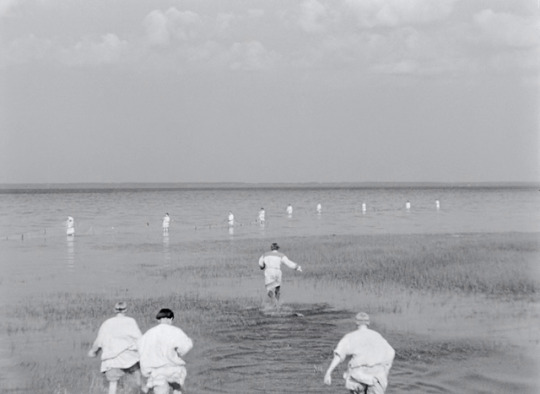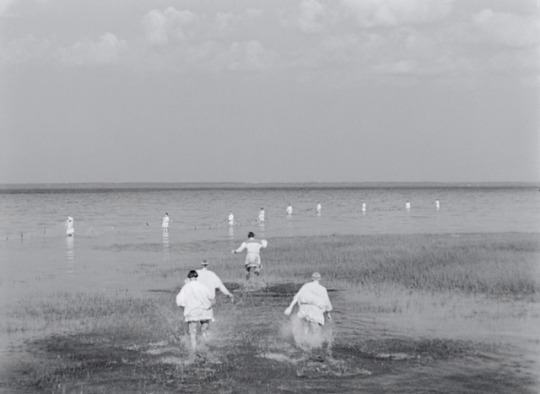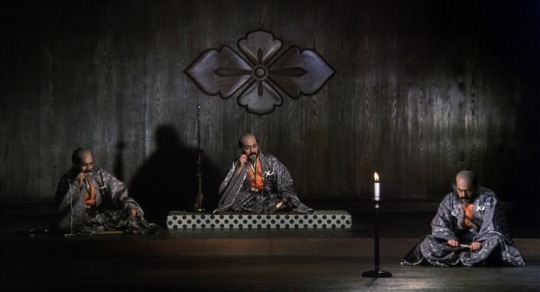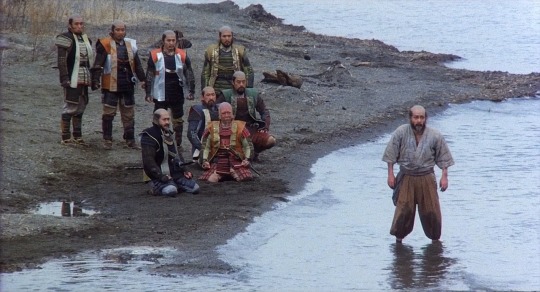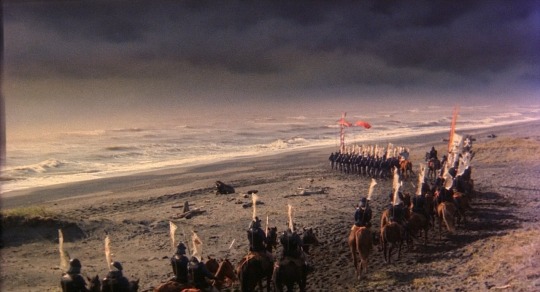Text



CYCLE 3 ・ 5/10 ・ UNITED KINGDOM
This Sporting Life (1963, Lindsay Anderson)
Lindsay Anderson is most famous for the films he made with Malcolm McDowell, such as 1968's If... and 1973's O Lucky Man! But This Sporting Life also deserves a place alongside those classics. Starring Richard Harris in a dynamic performance as the alternately surly and sensitive rugby star Frank Machin, This Sporting Life is striking for its brutal directness - established immediately in the visceral opening sequence, as we see men writhing around in the dirt and crashing into each other at lightning speed, resulting in a bloody loss of teeth.
This decades cycle makes the passage of time very clear, in terms of cinematic history, despite the fact that each film is from a different country. For a number of reasons, This Sporting Life is a film that just simply couldn't have been made any earlier than the 1960s. Its chilly reception upon its initial British release suggests that it may have even arrived too soon. The head-on approach to portraying life and the drama of everyday life, the visual correlation of graphic physical violence (here in the context of sports) and personal struggles, the roughshod dismantling of time and space to get inside a character's head and convey their thoughts. Even for the "kitchen sink" movement of the British New Wave, Lindsay Anderson was a cut above the rest, and essentially drove the nail into the coffin of the short-lived subgenre with this cutting-edge film.
#Cycle 3#1963#United Kingdom#England#British cinema#Lindsay Anderson#Richard Harris#sports film#rugby#kitchen sink#realism
9 notes
·
View notes
Text
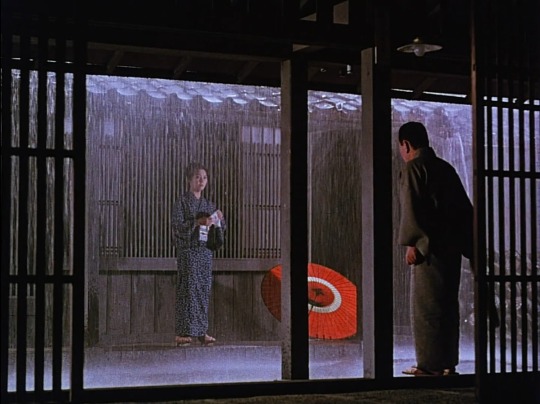
CYCLE 3 ・ 4/10 ・ JAPAN
Floating Weeds (1959, Yasujiro Ozu)
The films of Yasujiro Ozu are a rare breed. Heavy with emotion, but moving along with a light touch much like the momentum that prods us along with our lives, day in and day out. Still, every time I start to form an idea of what "typical Ozu" is, the next Ozu film I see always confounds me in some new way. This was one of Ozu's first color films, shot by the master cinematographer Kazuo Miyagawa. Miyagawa's involvement results in some unusually daring visual moments (most notably an argument during a downpour between people on opposite sides of the street), although Ozu's trademark floor cam is still there - watching the characters from the vantage point of a tatami mat as usual.
Rather than the Tokyo-based family dramas (and comedies) that were Ozu's standard fare, Floating Weeds is a sultry summer film set in a sleepy seaside town, which becomes host to a broken-down Kabuki troupe hosted by the surly patriarch Ganjiro Nakamura. Those who have seen Ozu's original 1934 silent film A Story of Floating Weeds will know the basic story. That film was more theatrical, whereas this remake focuses more on the details of setting and season which define Ozu's later films.
There's also a much harsher take on the main character, whose plays are criticized for being hammy and old-fashioned. This is even more true off stage, as he abuses the women in his troupe and hypocritically attempts to exert control over his son, who grew up thinking of him as an uncle. The drama is more heightened than usual, the characters more grating and desperate, but Ozu's tender sense of humanity still shines through - especially in his warm treatment of the younger characters, whose innocence and sincerity provides the perfect foil for their pathetic elders.
#Cycle 3#1959#Yasujiro Ozu#Japan#Japanese cinema#Asian cinema#Anako Wakao#Machiko Kyo#Ganjiro Nakamura#Kabuki#melodrama#Kazuo Miyagawa
4 notes
·
View notes
Text


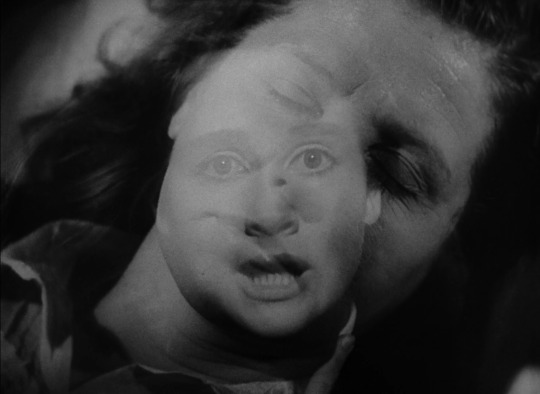

CYCLE 3 ・ 3/10 ・ SWEDEN
Crisis (1946, Ingmar Bergman)
At the outset of Ingmar Bergman's first film as director, the narrator informs us that we are about to see a film about "everyday life... almost a comedy." I guess that almost is the operative word here. Crisis is about a mother-daughter triangle of possession and desire, charged with some kind of strange psychosexual tension, augmented by two men who alternately torment and comfort the women in very different ways. At the same time, the film satirizes small town life and contrasts it with the sordid immorality of city life. I've never seen anything like this before, although there is a scene where a woman pleads with God to help her with her existential crisis while dreaming of her surrogate daughter in a superimposition that sets the stage for Persona. Yeah, this is Ingmar Bergman all right.
#Cycle 3#1946#Sweden#Swedish cinema#Ingmar Bergman#family drama#small town#existential#mother daughter relationship#debut film#Criterion Collection
4 notes
·
View notes
Text

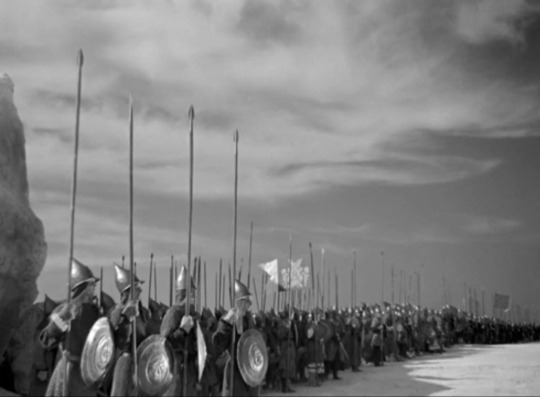
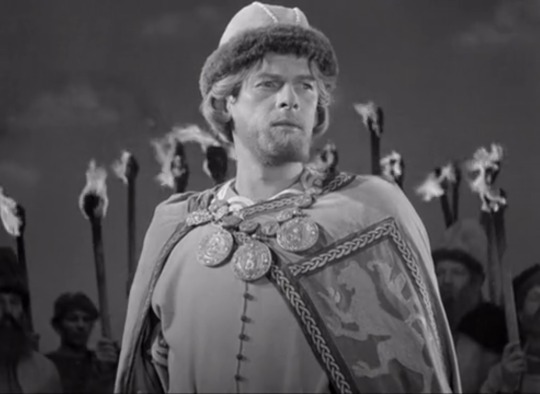
SCYCLE 3 ・ 2/10 ・ USSR
Alexander Nevsky (1938, Sergei Eisenstein)
Some films can be visually beautiful while being otherwise reprehensible. Alexander Nevsky is one of those films for me. Sergei Eisenstein was never known for his subtlety - as in his most famous film, Battleship Potemkin, one of the bombastic and explosive movies ever made. What bothers me about Alexander Nevsky is that it's a film about war that wholeheartedly promotes war as something virtuous and heroic. And that's something I just can't get behind, even if it is set in the 13th century.
The thing about Alexander Nevsky is that while it's a historical film about a real-life Russian hero (and saint!), it's obviously meant as a work of propaganda. How else can you take a film about fighting the barbaric Germans made just as the Nazis were beginning to set their sights on Europe? And wow, are these Germans barbaric! I mean, giving wailing babies the sign of the cross before dropping them on a giant bonfire, all while an old ghoul grinds a portable organ like the great grand-pappy of Dr. Phibes. Who wouldn't be ready to charge into battle at the drop of a hat (and a few lines about expressing your love for the motherland)?
Everything about the Russians, and the titular warrior's attempt to lead a ragtag group of peasants against the German horde, is just as pure and good as the Germans are corrupt and evil. Battle and the ability to wage war is seen as the foremost human virtue. Courage on the battlefield is the only standard that women use to choose their husbands. Add that to the fact that approximately a third of the film is one long battle sequence on a frozen lake. Of course, when the visuals are as masterful as these, it's hard to complain too much. The scene where the German battalion slowly creeps across the lake from far off in the distance is simply sublime. If only the rest of the film wasn't so hard to swallow.
#Cycle 3#USSR#Russia#Soviet Union#1938#Sergei Eisenstein#Alexander Nevsky#war film#action#history#13th century#propaganda#Sergei Prokofiev
6 notes
·
View notes
Text

CYCLE 3 ・ 1/10 ・ GERMANY
Michael (1924, Carl Theodor Dreyer)
I kick off my third cycle to date with a trip to 1920s Germany with the Danish master Carl Theodor Dreyer. Although Dreyer made over half of his film in the silent era, he is best known today for the last of these, The Passion of Joan of Arc, and the handful of sound-era masterpieces that he produced about once a decade for the rest of his career.
Michael, from the lesser-known early portion of Dreyer's career, contains much of the emotional anguish of Joan of Arc with more subtlety and less technical experimentation. It's most notable for the no-nonsense depiction of a destructive homosexual relationship between a master painter and his manipulative model, Michael. Michael is bisexual and much younger than his infatuated mentor, but the relationship is not completely one-sided either.
Of course, this being the 1920s, nothing is explicitly spelled out - conveyed instead through innuendos, sideways glances and brief moments of physical contact always highly charged with emotion. Despite the lack of explicit clarification, the depiction does feel honest, despite it being thoroughly downbeat and depressing. However, the film is just as much a cautionary tale about the pitfalls of relationships between people of different generations as it is about homosexuality in 1920s Weimar Germany.
#Cycle 3#Germany#German cinema#Carl Theodor Dreyer#Michael#LGBTQ cinema#weimar germany#weimar republic#silent cinema
0 notes
Text

Cycle 2 is now finished!
Cycle 3 will be a "decades" theme. One film, one country, one decade.
Since there's over 100 years to deal with, I'm going to start with the 1920s and go from there.
(Still from Jane Campion's An Angel at My Table)
0 notes
Text

CYCLE 2 ・ 10/10 ・ NEW ZEALAND
An Angel at My Table (1990, Jane Campion)
Even after 120 years of film history, and lots of advancements (as well as setbacks) in women's rights during that time, it still comes as something of a shock to see a film by a female director, with a female main character, more women than men in the cast, written by a woman and based on the autobiography of a female author. It's a good shock, of course, but it serves to illustrate how few films like this there have been - and why directors like Jane Campion are so important in film history.
As for the film itself, it's actually based on not one, but three autobiographies by the New Zealand poet and novelist Janet Frame. It was made as a three-part TV miniseries, with one episode for each book, which actually makes it feel like a pretty brisk watch. The first episode, To the Is-land, focuses on Janet's childhood. It's a lyrical and evocative portrait of growing up in WWII-era New Zealand. The second episode, which shares the title of the main film, is the most harrowing of the three parts. It covers Janet's failed attempt to become a teacher and her subsequent diagnosis with schizophrenia, which landed her in a lunatic asylum for eight years. Here, the necessary compression of time is noticeably, as it doesn't feel like eight years have passed once she's finally released, but the utter destructiveness and cruelty of the "hundreds" of electroshock treatments and inhuman treatment she received are palpable.
The third episode, The Envoy from Mirror City, finds Janet in the midst of a late blooming which occurred well into her adult life, during which she traveled around Europe and wrote some of her most acclaimed works - including a novel about her horrific experiences being treated for schizophrenia. This episode is like the calm after the storm, and is notable for Campion's exquisite rendering of how it feels to be a woman experiencing life's many pleasures and pains for the first time. To add to the list above, it's also highly unusual to see a woman who doesn't fit traditional standards of beauty in full nudity - but we see Janet naked quite a bit in this last section of the film. As with just about everything else in the movie, Campion captures it with incredible lyricism and delicacy, transforming a movie that could have been an average biopic into one that manages to convey something of the essence of its subject.
3 notes
·
View notes
Text



CYCLE 2 ・ 9/10 ・ FRANCE
Army of Shadows (1969, Jean-Pierre Melville)
When I think of Jean-Pierre Melville, I think of Alain Devon in Le Samourai, a lone wolf in a world of cool, emotionless gangsters. Army of Shadows is a film about the world French Resistance rather than gangsters, but the two worlds turn out to be surprisingly similar.
As in Le Samourai, the important thing isn't the code that one adheres to, but that one adheres to that code with unwavering fidelity. Maybe what drew Melville to the world of the Resistance in the first place is that it must have felt like a losing cause, not unlike the world of crime. Anyone who joins must accept that it's only a matter of time before they are caught, tortured, and killed - and not everyone is able to deal with the pressure. For those who are, there's no better reward than the knowledge that they remained true to their comrades. And that when fate comes knocking, the belief that they will have the courage not to run.
#Cycle 2#1969#France#French cinema#Jean-Pierre Melville#Simone Signoret#French Resistance#Army of Shadows#cool#firing squad
4 notes
·
View notes
Text

CYCLE 2 ・ 8/10 ・ ITALY
Ludwig (1973, Luchino Visconti)
Ludwig starts out as a sane movie about an eccentric and somewhat childlike king, and over the course of four hours, slides slowly into increasingly colorful and sprawling excess. This mirrors the journey of its subject: the "Mad King" Ludwig II of Bavaria. At first, his exploits consist mainly of spending huge sums on his patronage of Richard Wagner, who staged Tristan and Isolde for the first time on Ludwig's dime. As the film progresses, however, Ludwig starts building castles with underground ponds and swan boats, while also opting for illicit homosexual affairs with male aids rather than marrying and continuing the royal lineage.
An Italian-German co-production with an international cast (who spoke in English and had their lines dubbed in Italian after the fact), Ludwig was initially cut down to a less decadent length and sanitized for mass consumption, but it really needed to be four hours long in order to properly convey the king's slow descent into madness. What it didn't need were the occasional faux-documentary asides where ministers from Ludwig's government talk candidly about their disapproval (or, occasionally, approval) of the monarch's ruling style. It may have seemed like a fashionable idea at the time, but the rest of the film is more than able to convey these ideas on its own.
#Cycle 2#Italy#Italian cinema#Luchino Visconti#Ludwig II#Germany#1973#epic#history#Bavaria#Richard Wagner
7 notes
·
View notes
Text

CYCLE 2 ・ 7/10 ・ SOUTH KOREA
Memories of Murder (2003, Bong Joon-ho)
Memories of Murder is not your typical true crime serial-killer thriller. It follows the police investigation of a real-life serial killer in a rural Korean farming town, but it lacks suspense, or any clues to lead the characters on their "inevitable" path to find the killer. In fact, it's practically impossible to categorize. However, it does succeed as an enigmatic mystery that gets in your head and stays there much longer than the 132 minute running time.
A lot of this has to do with Bong Joon-ho's unconventional approach to tone and character development. The first half of the movie is often more of a goofy cop buddy comedy than a thriller, with inept sidekicks Song Kang-ho (the father in Bong's recent Oscar-winner Parasite) and Kim Roi-ha trading wisecracks and beating suspects into confessions, when they're not butting horns with the seasoned new recruit from Seoul (the brooding Kim Sang-kyung).
But as the film unfolds, layer upon layer of uncertainty is added to the investigation, and the dynamics between the characters begin to subtly shift. There are moments of dark humor, frustration, creeping dead, and inertia - while the truth seems to drift farther and farther out of reach. It's a classic case of "the more you think you know, the less you actually do." One of the thing that makes the film so unsettling is that while the characters' unpredictable behavioral shifts make them seem human and relatable, these shifts also make it impossible to know who they really are. Everyone seems vulnerable and transparent, both the police and the suspects, but are they really? Can we ever really know for sure who's guilty and innocent? These are the types of questions that Bong Joon-ho asks in this film, even though even he knows that the answers are just blowin' in the wind.
#Cycle 2#Bong Joon-ho#Memories of Murder#Song Kang-ho#serial killer#true crime#South Korea#Korean cinema#Asian cinema#2003
0 notes
Text

CYCLE 2 ・ 6/10 ・ JAPAN
Kagemusha (1980, Akira Kurosawa)
There's a resigned pessimism to Kagemusha that sets it apart from Kurosawa's earlier movies. Being Kurosawa's reintroduction to the world after a painful period of depression which left him mostly inactive for most of the 1970s, this film about a double living in the shadow of the man he is charged with impersonating feels deeply personal. Kurosawa almost certainly felt the pressure of living up to the Japanese public's memory of his past self, as well as the new audience which the names of executive producers George Lucas and Francis Ford Coppola brought to the film. Kagemusha might not impress Star Wars fans, but it is a work of elegiac grandeur, signaling the return of a master throwing himself into his art as if it were the last film of his life.
#Cycle 2#Japan#Japanese cinema#Asian cinema#1980#Akira Kurosawa#George Lucas#Francis Ford Coppola#visually stunning
0 notes
Photo



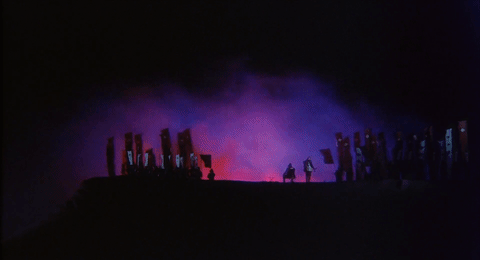
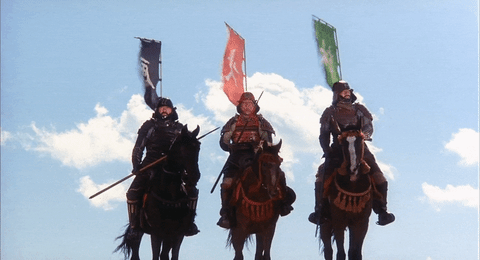
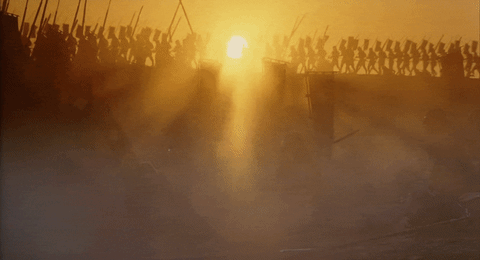

“The shadow of a man can never stand up and walk on its own.”
影武者 (Shadow Warrior, 1980)
dir. Akira Kurosawa
35 notes
·
View notes
Text
Can't have enough images from this film.

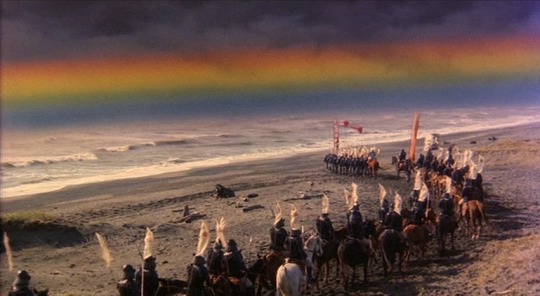



Kagemusha
dir. Akira Kurosawa
(1980)
91 notes
·
View notes
Text

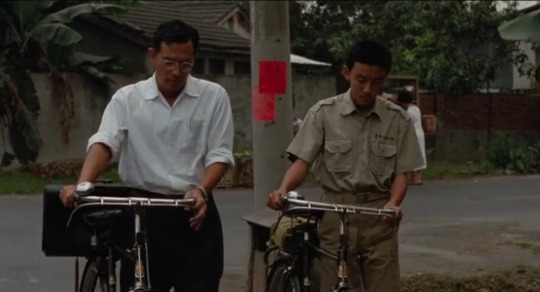
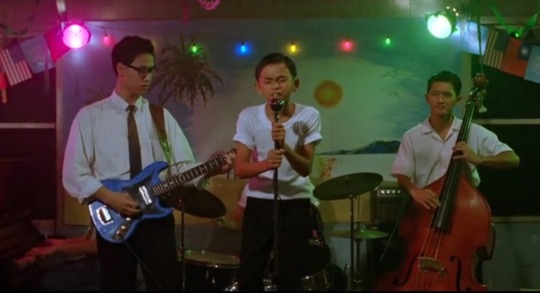


CYCLE 2 ・ 5/10 ・ TAIWAN
A Brighter Summer Day (1991, Edward Yang)
After my ten-hour odyssey in the Philippines earlier this week, I was a little wary of A Brighter Summer Day's four-hour length. I'm sure that distributors were afraid of the same thing when they neglected to give this film appropriate distribution back in 1991. But make no mistake, if you're still on the fence about watching this film, don't be. It's the rare instance of a film that I instantly know on first viewing is a MASTERPIECE.
It's hard to put the beauty of A Brighter Summer Day into words. Yes, the cinematography is staggering. Every shot in this film, even the simple ones, are exquisite works of art. They convey a poignant sense of time and place, not to mention humanity. And what's it about? Well, the Chinese title alludes to a real-life murder that occurred in 1961 Taipei. It's a teen drama that deals with romance in the awkward and overly serious way that teenagers do. It's a family story that covers the relationships between husband and wife, father and son, brother and sister, and even neighbors and friends without a moment of heavy-handedness. It's a warm, breezy epic with occasional bursts of violence that could rival any Martin Scorsese gangster film. In other words, it's pretty hard to categorize. Which is why A Brighter Summer Day, even after Criterion's shimmering HD restoration, will forever remain in the domain of cinephiles who don't need their movies neatly packaged and labeled.
#Cycle 2#Taiwan#Taiwanese cinema#Edward Yang#1991#A Brighter Summer Day#Criterion#nostalgia#teen drama#Asian cinema#Asian history#epic#masterpiece
7 notes
·
View notes
Text

CYCLE 2 ・ 4/10 ・ PHILIPPINES
Evolution of a Filipino Family (2004, Lav Diaz)
The first three films in this cycle were all between 2 and 3 hours long - reasonably long films, but still easily digestible in a single sitting. Evolution of a Filipino Family, however, is longer than all three of those films combined. 10 hours and 23 minutes, to be exact. Since I don't have this kind of time, even on a day off, I had to watch it over a period of three days. And it still left me exhausted.
The title is a bit of a misnomer. The film doesn't follow a single family through 16 years of Filipino history, as many synopses neatly suggest. It follows roughly three different groups of people, often jumping between them in a semi-linear fashion. One character, a boy named Reynaldo, serves as the connecting thread between all of them. It's been said that the structure of the film mirrors Filipino history, but to me, it felt very formless. However, the characters are often shown from a distance, and portrayed without much personality, which suggests that they are meant to be symbols for the Filipino people as a whole, rather than characters for us to identify with as individuals.
To give you a sense of what it's like to watch such a long film, here's a summary of my general impressions over the course of the film:
(2 hours in) Some of the characters are starting to come into view, but the relationships between them are still pretty unclear.
(4 hours in) The story is starting to come into clearer view now.
(6 hours in) A few major developments in the past two hours. Now there's a lengthy archival footage montage about the resistance movement against the Marcos regime in the 1980s.
(8 hours in) There's been one major tragedy and now another one seems inevitable. There's also a subplot involving a plot to murder famed Filipino filmmaker Lino Brocka - complete with staged reconstructions of Brocka interviews.
(9 hours in) A 20-minute death scene, one of the most famous scenes in the film, takes place around this point.
(10 hours in) The story is pretty much over now, lots of scenes of people sitting sullenly or walking down jungle paths in silence. Plus one bizarre scene of trees falling into a river in slow motion.
(15 minutes later) There's a brief epilogue that changes the tone abruptly, just before the end credits roll.

To sum up, this is an extremely long and slow-moving film that takes a lot of effort on the viewer's part. Its production was a gargantuan undertaking which took about nine years, shot on a combination of film and primitive DV. The passion of everyone involved is not in question, and there's definitely a lot of worthwhile material in these 10+ hours. But compared to something like Bela Tarr's Satantango, which is more visually satisfying and makes more sense structurally, I couldn't help feeling a bit unfulfilled by Evolution of a Filipino Family.
#Cycle 2#Philippines#Filipino cinema#southeast asia#southeast asian cinema#slow cinema#2004#Lav Diaz#long films#over 10 hours long#mubi
4 notes
·
View notes





